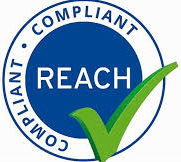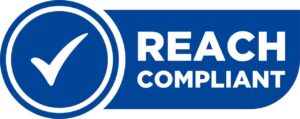REACH Regulatory
Information and Services for REACH Regulatory

REACH Regulation (EC 1907/2006)
The REACH Regulation (EC 1907/2006) is an important part of European legislation for the safe handling of chemicals. The term REACH stands for “Registration, Evaluation, Authorisation, and Restriction of Chemicals.” The aim of the regulation is to minimize the risks of chemicals to human health and the environment, and to require companies to assess and improve the safety of the chemicals they use.
In all EU member states and within the European Economic Area (EEA), chemicals that are intended to be placed on the market must be registered beforehand. This ensures that hazardous substances are gradually phased out and replaced by less risky alternatives. The REACH Regulation provides a clear framework for monitoring the use of chemicals and responding to their potential hazards.
The European Chemicals Agency (ECHA), based in Helsinki, is the central body responsible for coordinating and implementing the REACH rules. It ensures that all relevant information on chemicals is properly collected, evaluated, and processed to ensure the safe handling of chemicals across the EU.
Who must comply with REACH?
REACH applies to all companies dealing with chemical substances, regardless of whether they are used in industrial processes, everyday consumer goods, or products such as cleaning agents, paints, clothing, furniture, or electrical appliances. Therefore, the regulation has far-reaching implications for almost all sectors within the EU.
Manufacturers: If you manufacture chemical substances, whether for your own use or for sale, you must comply with REACH requirements. This includes registering the substances to ensure their safe use.
Importers: Companies that import chemicals or products from outside the EU or the EEA are also subject to REACH regulations. This applies not only to individual chemicals but also to mixtures or finished products such as clothing, furniture, or plastics.
Downstream Users: Many companies use chemicals as part of their production processes, often without being fully aware of it. In this case, you need to check if and which REACH obligations apply to your business, especially if you handle substances in your work.
The European Chemicals Agency (ECHA) provides detailed information on its website to help businesses fulfill their REACH obligations correctly.
SVHC: Substances of Very High Concern
Substances of Very High Concern (SVHC) are chemical substances that require special attention due to their hazardous properties. These substances are listed by the European Chemicals Agency (ECHA) on a candidate list. This list is updated and expanded twice a year, in June and January. Although SVHC may still be used, companies must inform customers of their presence in a product if their concentration exceeds 0.1%.
The main objective of the REACH Regulation in dealing with SVHC is to minimize risks and replace substances that are harmful to the environment or health with safer alternatives. ECHA includes substances on the candidate list if they exhibit at least one of the following hazard potentials:
- Carcinogenic
- Mutagenic
- Reproductivetoxic
- Very persistent (remain in the environment for a long time)
- Very bioaccumulative (accumulate in living organisms)
- Toxic
- Endocrine-disrupting (affect the hormone system)
A substance on the SVHC candidate list may later be included in the REACH Authorisation List, which forms part of Annex XIV of the REACH Regulation. From the “Sunset Date” of the entry, it is prohibited to import, manufacture, or use the substance in European production. The time between inclusion in the candidate list and the authorisation list can vary.
Manufacturers using SVHC in their products are required to provide customers with detailed information about the hazardous substances they contain. This especially applies to products that contain these substances and thus have specific reporting obligations.
Additionally, Annex XVII of the REACH Regulation contains a list of substances whose manufacture, use, and placing on the market are restricted or prohibited due to their health or environmental risks. These regulations are regularly adjusted through amending regulations. Therefore, REACH affects not only manufacturers but also importers, traders, and all downstream users across the entire supply chain.
Our REACH Services
Need assistance with demonstrating REACH compliance or managing legal requirements? We are your trusted partner. Our experienced team is ready to assist you quickly and provide tailored solutions for your needs.
We support you in identifying and reporting SVHC in your products, manage your data in the SCIP database, IMDS, CDX, and other market-specific databases such as BOMCheck, iPoint, and DataCross. Furthermore, we help optimize your internal processes with respect to REACH in an efficient and strategic manner.
Schedule a free needs assessment today!
Offer your customers a customized REACH compliance report, which can be updated every six months as needed.
REACH Certification and REACH Compliance
Companies that manufacture or import chemical substances within the EU and exceed a certain annual threshold (1 ton) are required to register these substances under REACH. This is done by applying for a REACH certificate, which confirms compliance with the regulatory requirements. During this process, the possibility of safer alternative substances or technologies is examined, as well as whether the chemicals used meet REACH requirements.

If the exposure to a substance falls below specific thresholds or if the socio-economic benefits outweigh the risks, the European Chemicals Agency (ECHA) may grant authorization. However, exceptions exist: chemicals that are already adequately regulated by other legal provisions may be partially or fully exempt from REACH reporting obligations. One example is the debate over the RoHS Directive, which some see as redundant since both regulations overlap in certain areas. This leads to dual regulation, particularly for manufacturers and importers of electrical and electronic equipment.
The information submitted during the REACH registration process is publicly accessible and can be viewed in the REACH database. This contains details about the chemical and physical properties of substances, their toxicity, and the quantities placed on the market in the EU annually. Data for which companies have requested confidentiality are excluded from publication. The REACH database promotes transparency and helps make knowledge about potential risks more accessible. As of May 2021, the database already included 23,197 substances and 100,979 dossiers.

Differences and Potential Confusion: REACH and SCIP Reporting Obligations
The REACH Regulation and the SCIP database obligation exist in parallel but have different legal bases and objectives. Since the introduction of the European Chemicals Regulation REACH in 2007, companies that place products or articles with SVHC on the market must communicate information about these substances to their customers. This obligation, known as the REACH reporting obligation, applies to products manufactured, sold, or imported within the EU that contain SVHC in a concentration of more than 0.1% by weight.
Since January 2021, it has also been mandatory to register these products in the SCIP database of the European Chemicals Agency (ECHA). This new obligation is not directly comparable to the REACH reporting obligation. While the REACH reporting obligation aims to inform customers about the hazardous substances contained, the SCIP database obligation is based on a different legal foundation – the Waste Framework Directive.
The two reporting obligations can be easily confused because both are based on the SVHC candidate list. However, they complement each other: the obligation to enter data into the SCIP database does not replace the REACH obligation to inform customers under Article 33(1) of the REACH Regulation.
The goal of the SCIP database is to assist companies in the waste management sector. It helps identify products with hazardous chemicals and correctly classify them for recycling or disposal. Consumers can also access the information to make informed purchasing decisions and consider the sustainability of products. They learn which SVHC are contained in products and how to use and dispose of them safely.
For more detailed information about the SCIP database requirements, we offer comprehensive consulting, training, and services.
